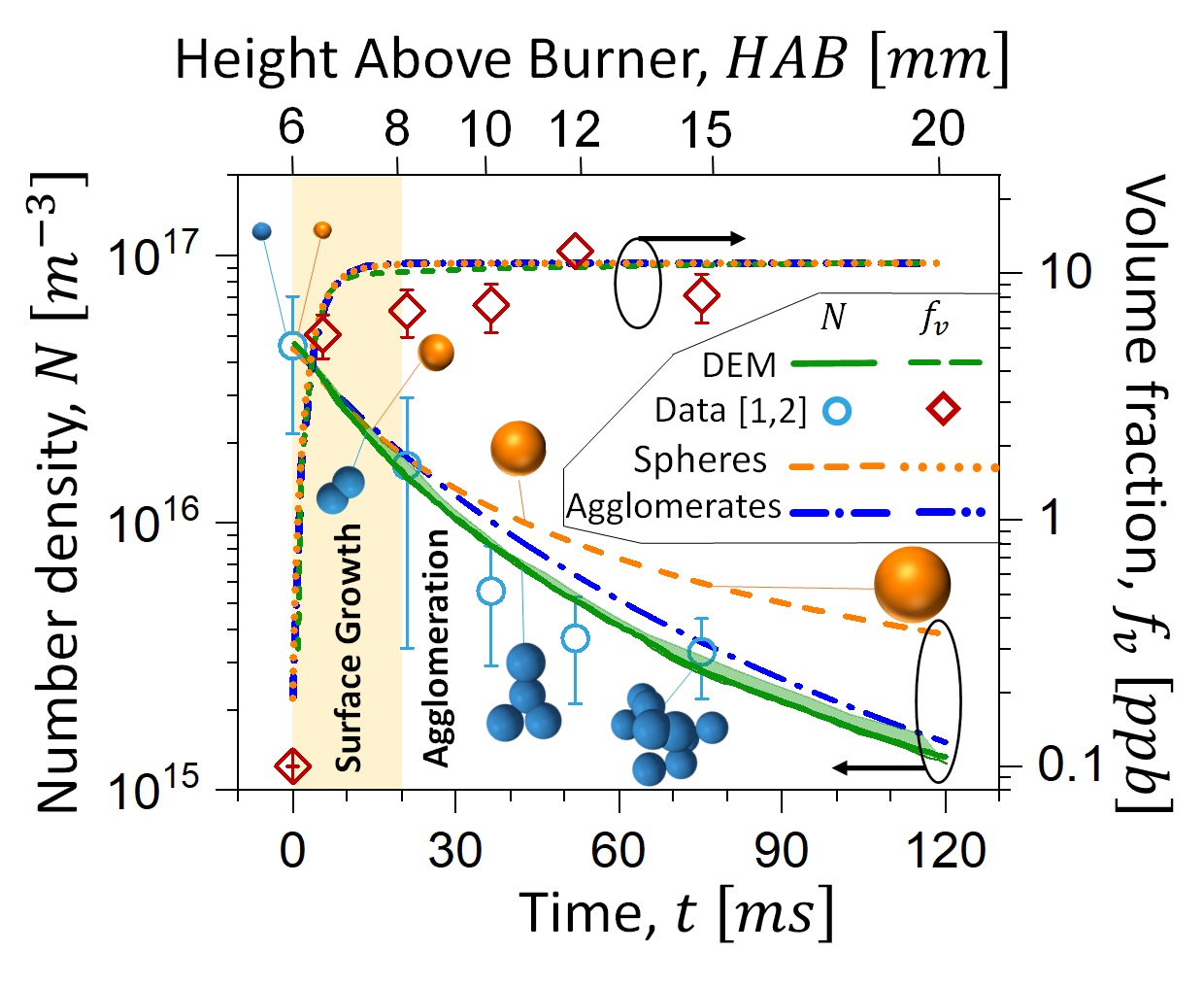Surface growth, coagulation and oxidation of soot by a monodisperse population balance model
A monodisperse population balance model (MPBM) is developed here that capitalizes on the rapid attainment of the self-preserving size distribution and asymptotic fractal-like structure of agglomerates by coagulation to simulate their evolution with only three equations. Total agglomerate carbon molar, C, number (N) and area (A) concentrations are tracked. The model accounts for the polydispersity of agglomerates by enhancing their collision frequency by that of their self-preserving size distribution based on the radius of gyration in the free molecular regime. Scaling laws from detailed discrete element modeling (DEM) simulations are used to describe the fractal-like morphology of the agglomerates. The MPBM predicts the evolution of soot fv, N and average mobility and primary particle diameters during surface growth and agglomeration in laminar premixed ethylene flames as well as soot oxidation in a tube reactor within 30% of detailed DEM, sectional population balance simulations and measurements. Thus, when self-preserving size distribution and asymptotic structure of agglomerates are attained, this simple MPBM has unprecedented accuracy and can be readily interfaced with computational fluid dynamic (CFD) to model soot formation in combustion devices or process design and optimization for the synthesis of carbonaceous agglomerate nanoparticles.

Evolution of soot volume fraction, fv (dashed green line) and number density, N (solid green line) during agglomeration and surface growth.
[1] A.D. Abid, N. Heinz, E.D. Tolmachoff, D.J.Phares, C.S. Campbell, H. Wang, Combust. Flame, 154 (2008), 775.
[2] J. Camacho, C. Liu, C. Gu, H. Lin, Z. Huang, Q. Tang, X. You, C. Saggese, Y. Li, H. Jung, Combust. Flame, 162 (2015), 3810.